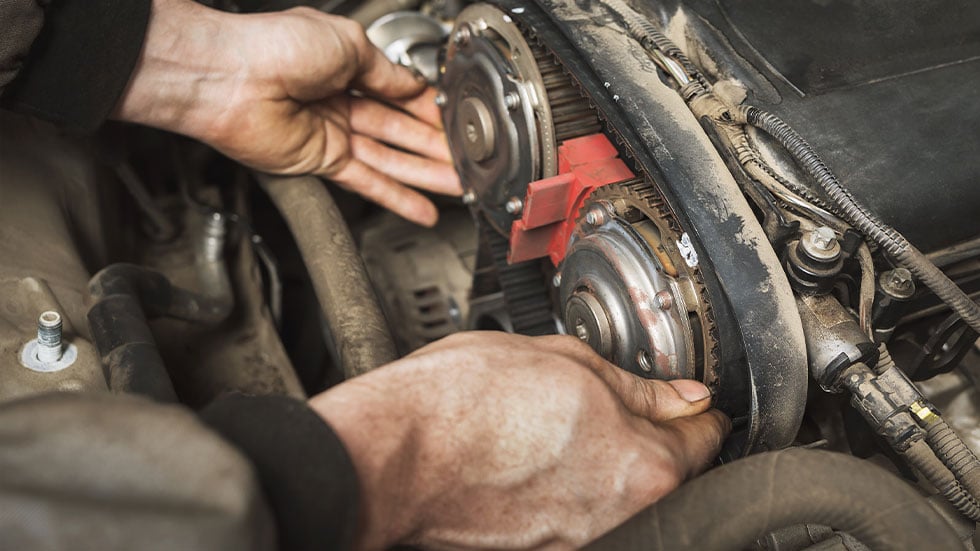When Should Timing Belts Be Replaced?
Don’t make this mistake! Find out what a timing belt does—and why it must be replaced on time


Your vehicle's timing belt is responsible for keeping precision components within your engine, like the valves and camshafts, moving in a synchronized manner while also transferring power from the spinning motor to things like the water, oil, and injection pumps, in some vehicles.
What is a timing belt?
This oft unspoken hero of your vehicle’s operation usually consists of a rugged, rubber belt that includes teeth which lock onto the engine's crankshaft and camshaft. As the crankshaft is rotated by the combustion in the engine to generate power, the belt also locks onto the camshafts, which are responsible for opening and closing the engine’s intake and exhaust valves. The timing belt keeps fuel burning efficiently by "timing"—or synchronizing—all the combustion processes perfectly so your engine can breathe. It also keeps sensitive and delicate engine components from crashing into one another, which can cause catastrophic and, in some cases, irreparable damage.

Timing belt replacement
Over time, as with any rubber belt on your vehicle, the timing belt will need to be replaced. Most auto manufacturers will have a recommended replacement interval somewhere between 60,000 and 100,000 miles. This will vary from vehicle to vehicle, and you should always consult your owner's manual for the recommended replacement interval. If you suspect your timing belt needs attention, visit your local, trusted mechanic.
While timing belt replacement cost may be a major reason many drivers put off servicing their belts, failure to address timing belt wear and tear in time could result in a broken belt, an immobile vehicle, and thousands of dollars in repairs. Not only will a broken timing belt prevent your engine from running, when the delicate components it is responsible for fall out of synch, they can crash into one another—causing catastrophic damage in the form of bent valves, broken cylinders, or other expensive damage.
Timing belt repair is not something you should ever procrastinate on or deviate from the manufacturer's suggested intervals for repair. As costly as timing belt service may be, it’s a far cry from the cost of replacing your entire engine. Running your timing belt past the service interval means you’re running the risk of being on the hook for thousands of dollars in repairs or maybe even a total engine replacement.
When it’s time to replace your timing belt, there are other indicators besides the manufacturer’s interval that may let you know your timing belt needs service:
- Engine misfires
- Difficulty starting
- Engine performance varies over 2,000 RPM
- Engine ticking noises
- Smoke or fumes coming from the engine
